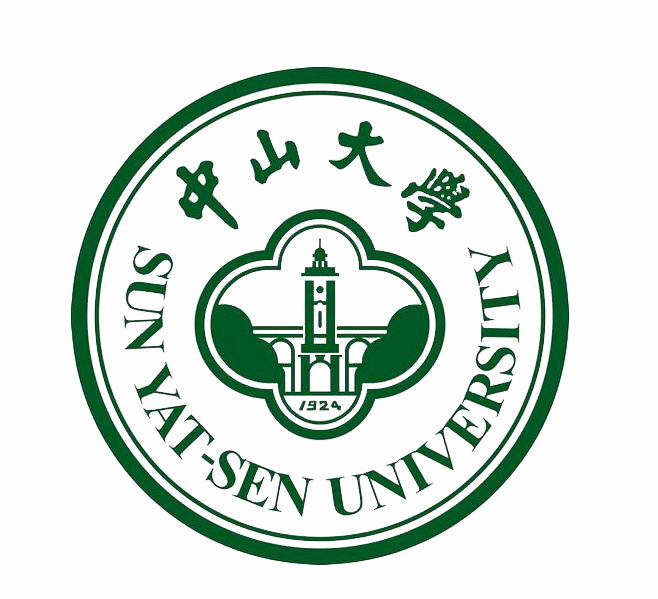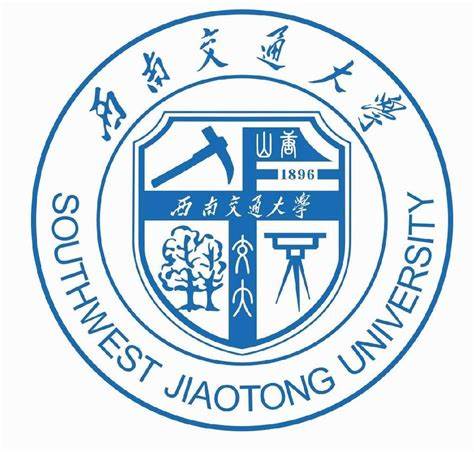Haofan Wang
 PhD., Sun Yat-Sen University (2022)
PhD., Sun Yat-Sen University (2022)
I'm a PhD. student at the School of Atmosperic Sciences, Sun Yat-sen University, China. My research interests include the impacts of urban canopy on regional meteorological conditions and air quality, and the impacts of the Biogenic Volcanic Organic Component (BVOC) on air quality. Rencently, I am working on the impact of ozone-vegetation feedback and urban green space on meteorological conditions and air quality. If you have any questions, please feel free to contact me.

Education
-

Sun Yat-Sen University
PhD. in the School of Atmosperic Sciences Sep. 2022 - Present
-

University of Manchester
Visiting Student (CSC Scholarship) Nov. 2023 - Nov. 2024
-

Chengdu University of Information and Technology
M.S. in the School of Environment and Resources Sep. 2019 - Jul. 2021
-

Southwest Jiaotong University
B.S. in the School of Electrical Engineering Sep. 2015 - Jul. 2019
Honors & Awards
- The first scholarship of the Sun Yat-sen University. 2024
- The second scholarship of the Sun Yat-sen University. 2023
- The second scholarship of the Sun Yat-sen University. 2022
Current Work
Selected Publications (view all )
MEIAT-CMAQ: A modular emission inventory allocation tool for Community Multiscale Air Quality Model
Haofan Wang, Jiaxin Qiu, Yiming Liu#, Qi Fan, Xiao Lu, Yang Zhang, Kai Wu, Ao Shen, Yifei Xu, Yinbao Jin, Yuqi Zhu, Jiayin Sun, Haolin Wang (# corresponding author)
Atmospheric Environment (AE) 2024 Spotlight
The Modular Emission Inventory Allocation Tool for Community Multiscale Air Quality Model (MEIAT-CMAQ) refines emission inventories by providing detailed spatial (horizontal and vertical), temporal, and species allocations, enhancing the accuracy of CMAQ performance. Its efficient algorithm and modular design offer flexibility for managing both gridded and tabulated inventories, widely used in various sectors. In addition, the shapefiles with specific shapes supported by MEIAT-CMAQ can address the allocation challenges in transportation emissions. The evaluation of MEIAT-CMAQ, using model-ready inventories before (BASE scenario), and after allocation without (EXPR scenario) or with (EXPR-V scenario) vertical allocation, demonstrates significant improvements in the mean bias (MB) of gaseous pollutants (O3, NO2, CO). In both the EXPR and EXPR-V scenarios, the MB for O3 exhibits notable enhancements, with respective improvements of 5.7% and 26.9%. For NO2, corresponding MB improvements are even more pronounced, reaching 27.6% and 61.7% in the EXPR and EXPR-V scenarios, respectively. Likewise, enhancements are observed in the MBs of CO, demonstrating increases of 8.4% and 45.2% in the EXPR and EXPR-V scenarios, respectively. Moreover, with regard to spatial accuracy, the incorporation of the MEIAT-CMAQ model yields significant improvements. Specifically, in the EXPR scenarios, spatial accuracy for O3 and NO2 demonstrates respective enhancements of 13.5% and 9.5%. Furthermore, the inclusion of vertical allocation leads to additional enhancements in CO, NO2, and PM2.5, resulting in improvements of 17.6%, 16.6%, and 23.2%, respectively. MEIAT-CMAQ provides an efficient method for transforming coarse-resolution emission inventories into high-resolution files directly useable in the model, offering enhanced flexibility for users to select any period for generating model-ready emission files. This capability provides substantial technical support for automating processes within business departments and significantly improves the performance of high-resolution modeling and forecasting.

Impact of Urbanization on Meteorology and Air Quality in Chengdu, a Basin City of Southwestern China
Haofan Wang, Zhihong Liu, Kai Wu, Jiaxin Qiu, Yang Zhang#, Bangping Ye, Min He (# corresponding author)
Frontiers in Ecology and Evolution (FEE) 2022
Rapid urbanization has the potential to fundamentally perturb energy budget and alter urban air quality. While it is clear that urban meteorological parameters are sensitive to urbanization-induced changes in landscapes, a gap exists in our knowledge about how changes in land use and land cover affect the dynamics of urban air quality. Herein, we simulated a severe O3 episode (10–16 July 2017) and a highly polluted PM2.5 episode (25–30 December 2017) and assessed the changes of meteorological phenomenon and evolution of air pollutants induced by urbanization. We found that the urban expansion area (i.e., land use transition from natural to urban surfaces between 2000 and 2017, UEA) has a significant increase in nocturnal 2-m temperature (T2) with maximum values reaching 3 and 4°C in summer and winter, respectively. In contrast, UEA experienced cooling in the daytime with stronger reductions of T2 in winter than in summer. The T2 variability is primarily attributed to the intense thermal inertia and high heat capacity of the urban canopy and the shadowing effect caused by urbanization. Owing to increased surface roughness and decreased surface albedo as well as shadowing effects, the ventilation index (VI) of UEA increased up to 1,200 m2/s in winter while decreased up to 950 m2/s in summer. Changes in meteorological phenomenon alter physical and chemical processes associated with variations in PM2.5 and O3 concentrations. Urbanization leads to enhanced vertical advection process and weakened aerosol production, subsequently causing PM2.5 levels to decrease by 33.2 μg/m3 during the day and 4.6 μg/m3 at night, respectively. Meanwhile, O3 levels increased by 61.4 μg/m3 at 20:00 due to the reduction of horizontal advection induced by urbanization, while O3 concentrations changed insignificantly at other times. This work provides valuable insights into the effects of urbanization on urban meteorology and air quality over typical megacities, which support informed decision-making for urban heat and air pollution mitigation.

Impact of different urban canopy models on air quality simulation in Chengdu, southwestern China
Haofan Wang, Zhihong Liu, Yang Zhang#, Zhengyang Yu, Chunrong Chen (# corresponding author)
Atmospheric Environment (AE) 2021
Urban air pollution has emerged as a prominent public health concern in megacities and highly developed city clusters. Accurate modeling of urban air quality over complex terrain is challenging due to heterogeneous urban landscapes and multiscale land-atmosphere interactions. In this study, we investigated the applicability of urban canopy models in the Weather Research and Forecast (WRF) model and assessed the impacts of implementing these models on the urban air quality simulation in the Community Multiscale Air Quality (CMAQ) model over the megacity Chengdu, southwestern China. The land use and land cover of Chengdu were updated in WRF by using the land-use products in 2017 from the Moderate-resolution Imaging Spectroradiometer (MODIS). Sensitivity experiments with various urban canopy models were conducted to investigate the feasibility of different urban canopy models on WRF-CMAQ simulations. We found that the SLAB model significantly underestimates NO2 and PM2.5 concentrations, with mean fractional bias in winter (summer) reaching 52.93% (−50.34%) and −102.82% (−23.12%), respectively. Such large biases are mainly attributed to overpredicted wind speeds resulting from the flat structure in the SLAB model. In contrast, the BEM (a multilayer urban canopy model coupled with air-conditioning systems) model yields the best model performance in both winter and summer, with mean fractional errors of 33.15% (38.96%) and 34.10% (33.15%) for NO2 and PM2.5 in winter (summer), respectively. The UCM (a single-layer urban canopy model) model illustrates good performance in summer, with MFBs of 25.61% for NO2 and 19.03% for PM2.5 , while NO2 and PM2.5 concentrations are overestimated in winter, with MFBs of 62.58% and 38.19%, respectively. In contrast, BEP (a multilevel urban canopy model)-modelled NO2 (MFB: 37.18%) and PM2.5 (MFB: 18.72%) correlate well with observations in winter, while significantly overestimated air pollutant concentrations in summer with MFBs of NO2 and PM2.5 of 49.70% and 44.50%, respectively. In general, the BEP model and the BEM model are well suited for air quality simulations over Chengdu in winter, and the BEM model could be considered for air quality simulations in summer. Furthermore, we assessed the effects of extensive usage of air conditioning systems in Chengdu during summertime, and the results suggest that using air conditioning systems facilitates the dispersion of air pollutants over Chengdu. This study pinpoints the limitations of default WRF configurations and tests the applicability of urban canopy models in the WRF-CMAQ model over Chengdu, in addition highlighting the crucial role of urban canopy models in urban meteorological-air quality simulations.



